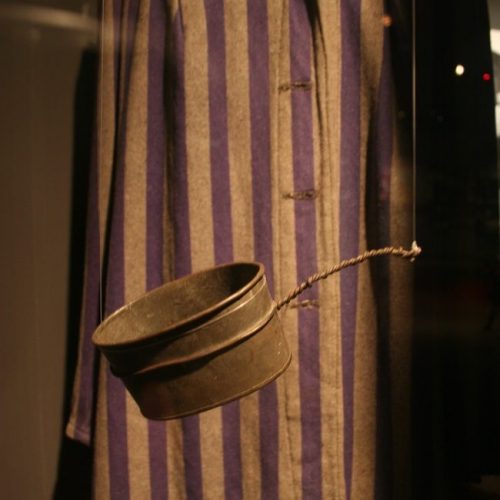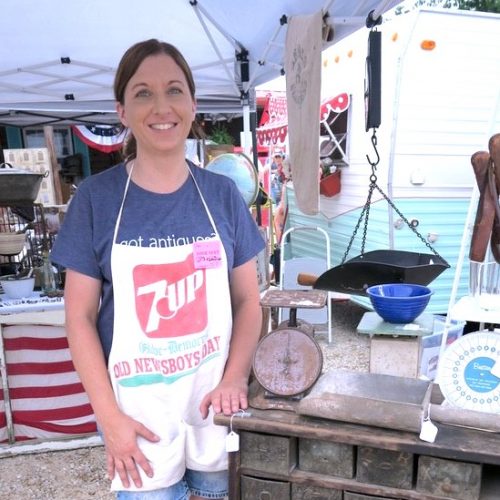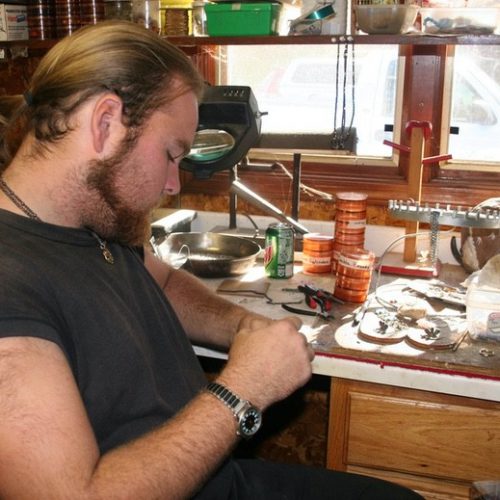I first noticed Madison Woods, who calls herself a “nature farmer,” on Instagram, in her feed titled “Wild Ozark.” I felt drawn to her art – featuring watercolor plants and animals of the Ozarks – painted with pigments that she makes from rocks and plants that she finds in the Ozarks, near her home in Arkansas. It turns out, she is multi-talented, and writes rural fantasy fiction and books about ginseng and herbs, and grows and sells ginseng, too. She answered a few questions recently, and I know you’ll be even more interested in what’s she doing after you read more about her.
More About Madison Woods
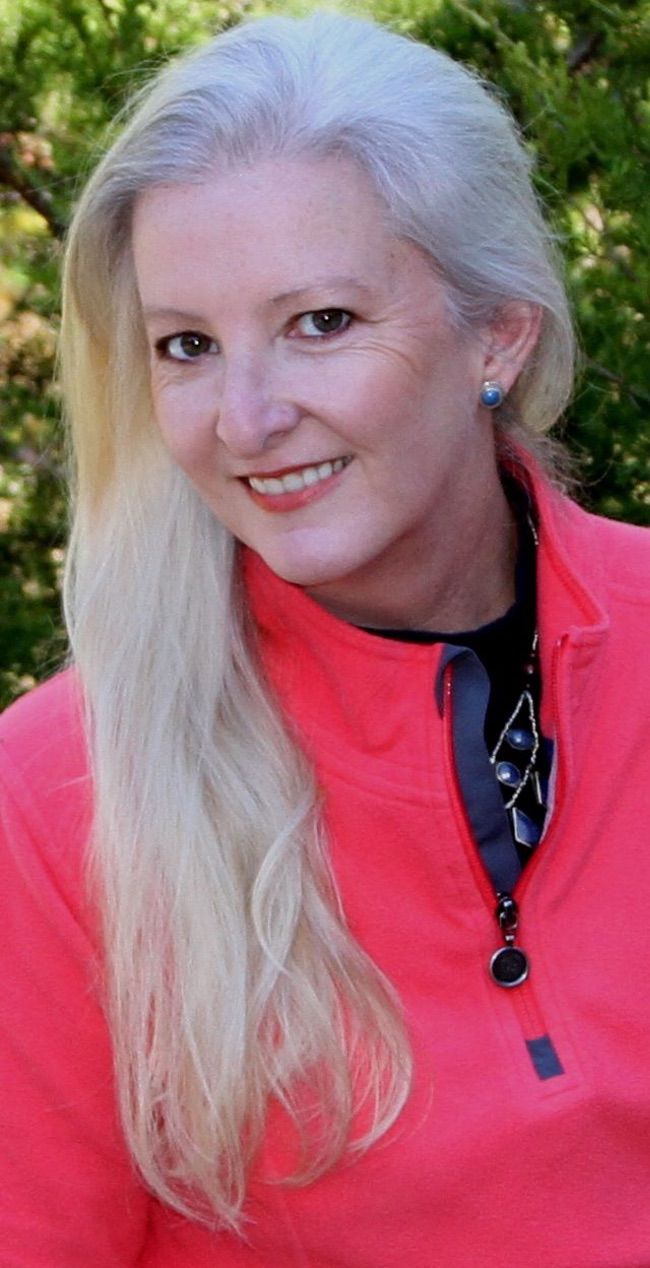
When people ask you what you do, what do you say?
I finally feel comfortable saying I’m an artist and paintmaker. If they’re interested in that, I’ll add that I make my paints from the local pigments and go from there. It’s all so fascinating to me that I could talk a lot on the topic but I try to not deluge people who really are just trying to be polite, lol.
Are you a native of the Ozarks?
No, I moved here 15 years ago from south Louisiana. I traded mosquitoes and alligators for ticks and rattlesnakes.
Why do you stay or why are you drawn to the Ozarks?
I’ve always been drawn to wilderness, moving water and rocks, and our land here has all of those things. I’m naturally reclusive, so the abundance of natural resources and the lack of population is another draw. I stay because I love it here. It’s my “habitat.”
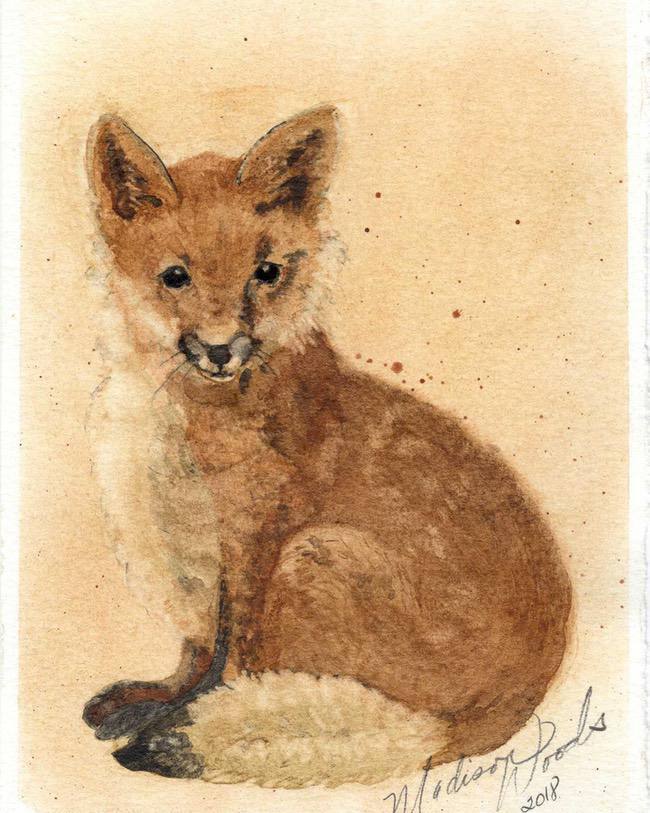
You started painting in 2018, and claim you’re self-taught. Is this something you’d always wanted to do — or did it fall into place?
I’ve always been creative and so I experimented with a few different things before coming to painting in 2018. Before this I crafted little people from twigs and botanicals and called them “Forest Folk,” made fairy garden terrariums in glass globes and used Prismacolor pencils for drawing. But all of that really only began after I retired from my last laboratory in 2013. I spent my adult life in various organic, inorganic or environmental laboratories. To satisfy the creative drive, I practiced photography and writing. As an even younger person, I did a lot of drawing and dabbled with pastels.
The painting was a serendipitous discovery that came after I discovered the pigment in our rocks. I hadn’t made a watercolor painting until after I made my first set of paints. I had no idea I’d love it so much and the range of colors I’ve managed to create from only what is right here around me is incredibly intriguing to me still. So I learned how to paint in order to make use of the pigments because I was definitely interested in continuing to make them. So one activity kind of feeds the other.
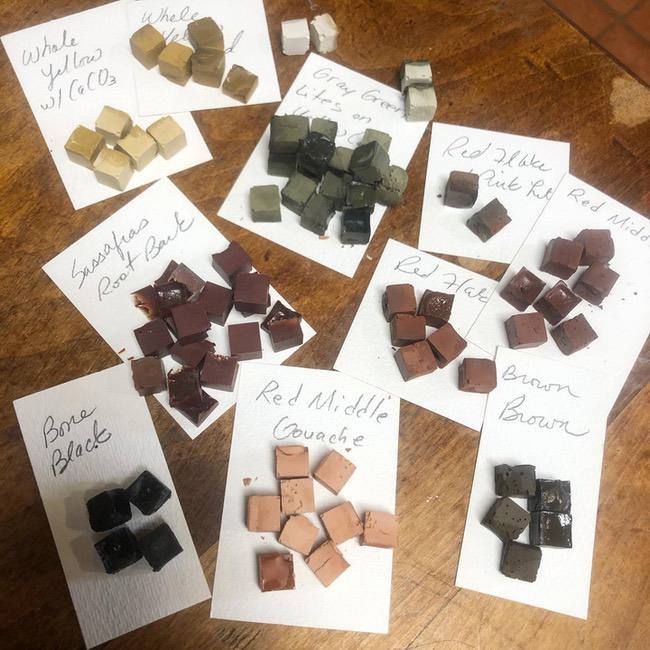
When did you begin making your own paints with crushed rocks, and why?
That started on a much delayed whim. Since we moved here I’ve admired the colors inside the broken rocks on the driveway. Our driveway is almost a half a mile long, winding into the folds of a holler out here in rural Madison county, Arkansas. One day in June 2018, I finally picked up one of those rocks and decided to crush it. I rubbed a little of the dust onto a sheet of paper and it left a colorful mark. At first I thought, ‘Wow, this is like loose pastels!’ I can’t remember what made me think it could actually be turned into paint, but the spark of the idea was there. So I got online and did some research and found out how to turn raw pigment into paint. It fascinated me that to learn that this is how paints used to be made before you could just go to an art store to buy them.
I had the first set of paints almost finished when it was time for me to leave on a trip to visit my husband where he’d been working, in Doha, Qatar. I brought the paints with me and made my very first painting there, while he worked during the daytime and I stayed at his apartment waiting for him to get off. The fact that it actually made color on the paper, and the idea that I might actually be able to make art this way intrigued me so much it became an obsession to keep trying to paint better.
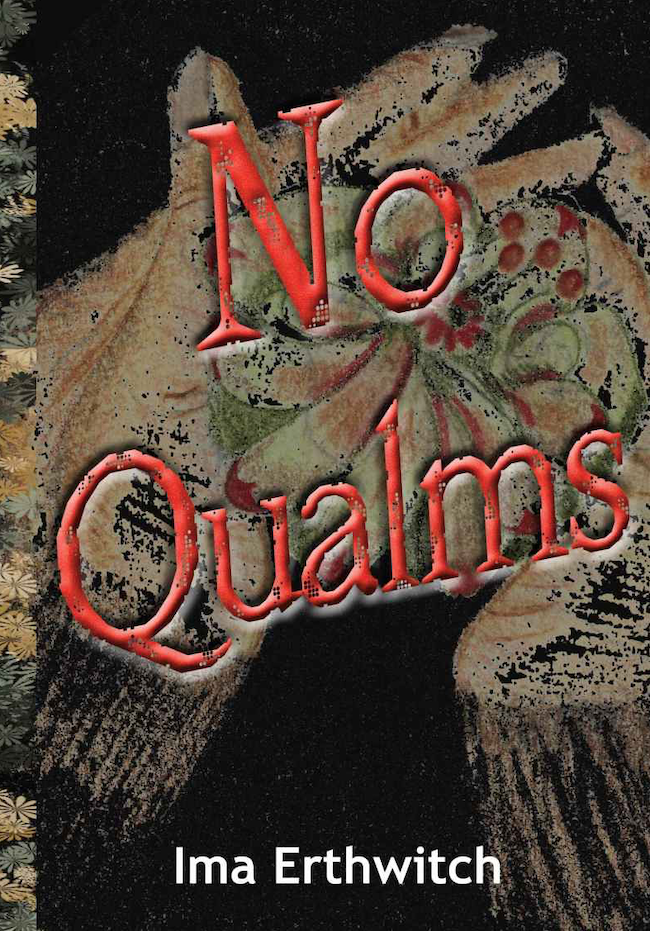
You’re also an author — of rural fantasy fiction (and several books on growing and drawing ginseng) — can you explain that drive? Are you working on another book?
Haha. I don’t know if I can explain that drive. I have a pretty … odd … imagination. I’ve been writing my stories down since long before the art, even while I was still a career laboratory analyst. I love to read fantasy and particularly enjoy it when the settings are not quite the same as our own world. So I guess I began writing to tell the stories in my own head. I still write, and I am working on the last book of a 3-book series I started a while back. I’m a very slow painter, and a slow writer too, so it’s still a work in progress.
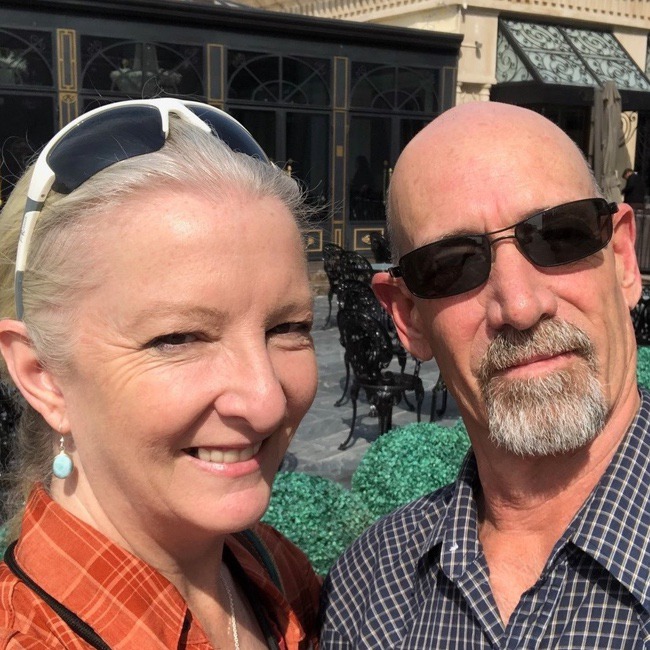
You and your husband, Rob, obviously walk the Ozarks walk, and live off the grid. What’s been your biggest challenge so far and what is your next big project?
Rob and I are very much interested in becoming off the grid. We’re not there yet. The biggest challenge is money. Surprisingly, it costs a fair amount of money to live in the middle of nowhere and live off grid if you don’t also produce your own fuel, food, clothing and housing materials. Oh, and you’ll need to also provide the labor for all that work as well, if you can’t afford to hire help. My art isn’t making that kind of money (yet — one can dream!). So Rob works overseas a lot for the military (he’s retired military), but that is all scheduled to end this year. He’ll be home to begin the next project that will take us closer to true off grid living: solar power. He also is creative and has long overdue woodworking dreams to pursue.
With the COVID-19 quarantine, there’s been a real downturn in festivals and art fairs. Has this affected you and what have you done instead?
Oh, this has definitely affected me. Most of my art income came from consignments in small gift shops and art galleries. I had just begun the process of jurying for art shows when it all came crashing to a halt. I had also finally begun to gain some exposure through exhibits in other areas, and now those exhibits are closed to real life and have gone virtual. Virtual exhibits aren’t helping all that much.
So what I’ve done is to pivot my effort toward my own online art shop at my website. I’m able to produce high-quality prints with a professional art printer here at home and I am continuing to make paints to sell. So it’s definitely a good option for me to take it to an online market.
Aside from the lack of real-life venues, once schools shut down I began full-time caretaking for a granddaughter, and now I’m a homeschool teacher, so there hasn’t been time to produce new art. I think I’ll be able to schedule painting time back into my life now that we’ve settled into some sort of routine, though.
How does your creativity play out in other areas of your life?
I love working in my garden, so I’ve focused on that for my creative outlet. Laying rocks to make pathways and terrace walls do satisfy a creative urge quite well. And I have taken the camera out again lately, and that helps. What I really need to do is more writing and painting, though, so I’m easing back into that, carving a little of my time and space away from the caretaking duties to get there. I have to find a way to get into the zone while also not being alone in the house anymore. That’s been the challenge.
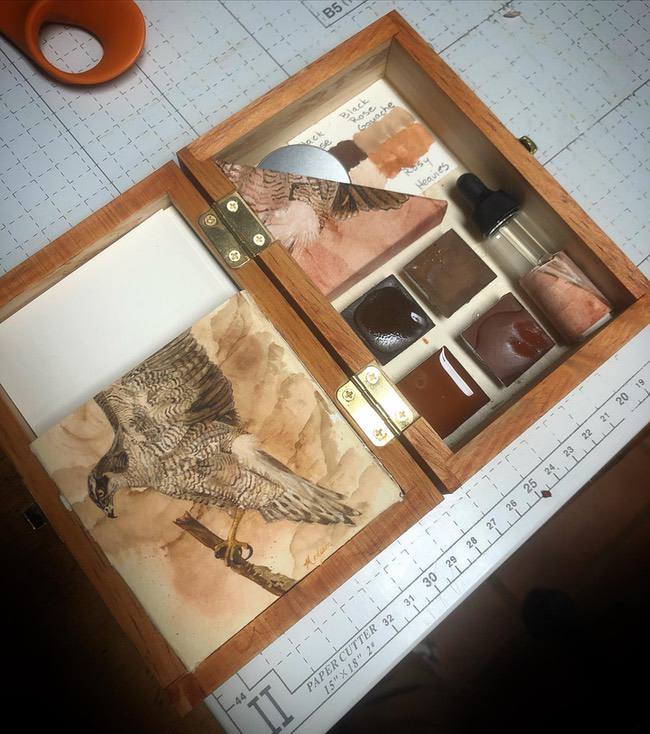
What’s next?
The scientist in me loves to catalog things. I want to continue to paint the nature surrounding me, but I like to do it in series. I’m working on a few projects that could conceivably last the rest of my life, so I’m just going to keep doing what I’ve been doing:
Ozark Birds of Prey – these birds are well-suited for the colors I make, and I’m not even halfway through the list I want to paint, yet. This is my favorite line of paintings. I just love raptors.
Ozark Game Birds – these also are well-suited for my palette. On the list there are quail, dove, wild turkeys, woodcock.
Orchids of the Ozarks – these are NOT well-suited for my palette if I want to do realistic representations of them, but I am going to do these in grayscale or grayscale with limited colors for accent.
In between all of that, I’ll continue to do landscapes, other random animals and nature fantasy, too.
And not last and certainly not least, I want to catalog all of the pigments I’ve found. I like to stick to the light-fast colors, so that eliminates almost all of the plant pigments. As I make new paints, I’m keeping records of the process and source materials. Eventually I’d like to write a book about it, but I have no idea yet how that project might look. I’m keeping a huge journal of colors.
In the future, if things return to some sort of normal in person interactions, I’d like to begin the jury process again to attend art shows and see if I can sell original paintings again. It’s very satisfying when someone loves what I’ve created enough to pay what I’m asking for it. The prices reflect the amount of work that goes into it, which is a lot, considering I’m starting with rocks.
Learn more about Madison Woods at Wild Ozark.
If you’re on Instagram, be sure to follow Wild Ozark.
Read Madison Woods’ books on Amazon.

